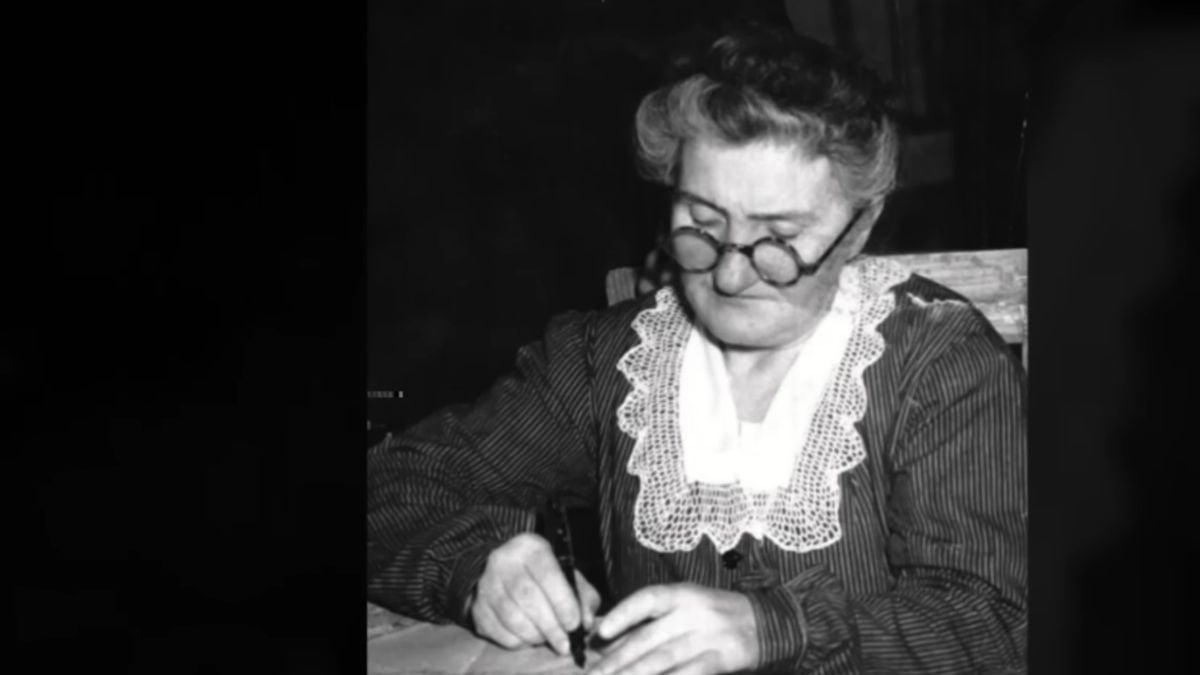In the quiet town of Correggio, Italy, during the late 1930s, Leonarda Cianciulli appeared to be a normal shopkeeper and mother. Loved by her neighbors, she ran a small shop where people often stopped by to visit. However, behind this façade of normalcy, she was planning something horrifying that would shock the entire country.
Leonarda Cianciulli’s life had been difficult from the very beginning. Born in 1894, she grew up in a home where her parents treated her harshly. According to Wikipedia, she attempted suicide twice during her youth. In 1917, she married a man named Raffaele Pansardi, but her mother disapproved of the match and reportedly placed a curse on their marriage.
The couple endured many hardships. Their home was destroyed in an earthquake in 1930, and tragedy struck repeatedly with the loss of many children. Leonarda was pregnant seventeen times; sadly, three babies were stillborn, and ten more died in early childhood. Only four of her children survived. These devastating losses made Cianciulli extremely fearful for the lives of her remaining children.
Her fears intensified when a fortune teller warned her that all her children would die young. Another fortune teller, reading her palm, predicted that she would end up in prison and a mental hospital.
When her favorite son, Giuseppe, was drafted into the army for World War II in 1939, Cianciulli became desperate. Convinced that human sacrifices would protect him, she began committing murders, turning the victims’ bodies into soap and teacakes. She even gave the soap to her unsuspecting neighbors.
Her first victim was Faustina Setti. Setti had come to Cianciulli asking for help to find a husband. Cianciulli pretended she had found a suitable man in another town and persuaded Setti to write postcards that would be sent later. When Setti visited one last time, Cianciulli killed her with an axe. She dismembered the body and boiled the pieces in a chemical called caustic soda.
Cianciulli later claimed that she took Setti’s blood, dried it out, and mixed it with flour, sugar, chocolate, milk, eggs, and butter to bake teacakes. She served these cakes to her visitors and even shared them with her son Giuseppe.
Her second victim was Francesca Soavi. Cianciulli told Soavi she had found her a job at a school. On September 5, 1940, she killed Soavi in the same brutal manner as the first victim.
The third victim was Virginia Cacioppo, a former opera singer. This time, Cianciulli made soap from Cacioppo’s body. According to her police statement, the woman had fat, white flesh that, when boiled with cologne, produced creamy soap. Cianciulli distributed bars of this soap to neighbors and acquaintances.
Suspicion arose when Cacioppo’s sister-in-law noticed her disappearance and reported that she had seen Cacioppo enter Cianciulli’s house. The police launched an investigation and arrested Cianciulli.
Initially, she denied any involvement. However, when authorities considered the possibility that her son Giuseppe had assisted her, Cianciulli confessed to all three murders to exonerate him.
These chilling events reveal the dark story behind the seemingly ordinary life of Leonarda Cianciulli—the “Soap-Maker of Correggio”—whose crimes left a lasting mark on Italian history.
https://wegotthiscovered.com/true-crime/46yo-woman-convinced-human-sacrifices-will-save-her-family-so-she-turns-strangers-into-soap-and-teacakes/



